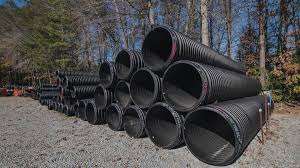Nov . 29, 2024 23:00 Back to list
Different Types of PVC Pipes and Their Manufacturing Processes
An Overview of Types of PVC Pipes and Their Manufacturing Process
Polyvinyl Chloride (PVC) pipes are one of the most widely used types of piping systems in both residential and industrial applications. Unlike metal pipes, which can corrode over time, PVC pipes are resistant to rust and resistant to many types of chemicals. This has made them the preferred choice for plumbing, drainage, and various industrial applications. This article explores the different types of PVC pipes and the processes involved in their manufacture.
Types of PVC Pipes
1. PVC-U Pipes The most common type of PVC pipe, PVC-U (unplasticized polyvinyl chloride), is known for its rigidity and strength. It is used primarily in water supply systems, sewage disposal, and irrigation projects due to its durability and resistance to impact and chemicals. PVC-U pipes do not contain any added plasticizers, making them a stable and cost-effective choice for transporting non-potable water.
2. PVC-C Pipes PVC-C (chlorinated polyvinyl chloride) pipes have a higher temperature resistance compared to PVC-U pipes and are often used in hot water applications. They are particularly beneficial in commercial applications where hot water systems are required. The chlorination process improves the material’s thermal stability, allowing it to withstand temperatures up to 90°C (194°F).
3. PVC-O Pipes Orientation PVC (PVC-O) pipes are manufactured through a process of uniaxial orientation. This manufacturing technique enhances the pipe’s strength while reducing wall thickness, making PVC-O pipes lightweight and easier to handle. These pipes are ideal for high-pressure applications, including water transportation, and are also more cost-effective due to reduced material usage.
4. Flexible PVC Pipes Flexible PVC pipes provide significant versatility, allowing them to be used in a variety of applications that require bending or movement. These types of pipes are typically used in garden hoses, electrical conduit, and various other projects where flexibility is essential. The inclusion of plasticizers in the manufacturing process allows these pipes to remain pliable while still offering durability.
5. PVC Drainage Pipes Specifically designed for drainage applications, these pipes feature smooth surfaces that facilitate the quick removal of wastewater and prevent blockages. They are commonly used in residential sewer systems and stormwater management due to their excellent flow characteristics.
types of pipes pvc factories

Manufacturing Process of PVC Pipes
The production of PVC pipes begins with the raw materials—polyvinyl chloride resin, stabilizers, lubricants, and colorants. The initial step involves blending these components to achieve the desired properties of the final product.
The mixture is then fed into an extruder, a machine that melts the blend and forces it through a die, shaping it into the desired pipe form. Once shaped, the newly formed pipe moves through a cooling chamber, where it is cooled and solidified. The cooling process can be crucial as improper cooling may cause deformities.
After the cooling, the pipes are cut to specified lengths and subjected to quality control checks to ensure they meet industry standards. Tests can include checking for consistency in diameter, wall thickness, and resistance to pressure.
Finally, the pipes are packaged for distribution. Many factories are now implementing automation and advanced technology to streamline the manufacturing process, improving efficiency and product quality.
Conclusion
PVC pipes are an essential component in various industries due to their durability, versatility, and cost-effectiveness. Understanding the different types of PVC pipes and the manufacturing processes involved can help consumers and manufacturers make informed choices, ensuring that the right products are utilized for each unique application. With continual advancements in production techniques, the future of PVC pipes looks promising, paving the way for innovative solutions in plumbing and drainage systems.
-
High-Quality PVC Borehole Pipes Durable & Versatile Pipe Solutions
NewsJul.08,2025
-
High-Quality PVC Perforated Pipes for Efficient Drainage Leading Manufacturers & Factories
NewsJul.08,2025
-
High-Quality PVC Borehole Pipes Durable Pipe Solutions by Leading Manufacturer
NewsJul.08,2025
-
High-Quality PVC Borehole Pipes Reliable PVC Pipe Manufacturer Solutions
NewsJul.07,2025
-
High-Quality UPVC Drain Pipes Durable HDPE & Drain Pipe Solutions
NewsJul.07,2025
-
High-Quality Conduit Pipes & HDPE Conduit Fittings Manufacturer Reliable Factory Supply
NewsJul.06,2025

